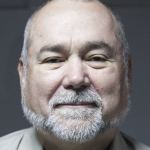
Short URL: http://tinyurl.com/Steele-ACI
As published: Spanda CI–Applied collective intelligence
Citation: Steele, R.D. (2014) “Applied Collective Intelligence: Human-Centric Holistic Analytics, True Cost Economics, and Open Source Everything,” Spanda Journal (Vol. 2, pp 127-137)
ABSTRACT: The emerging discipline of Collective Intelligence (CI) has been mis-directed by a combination of the faddish focus on “wisdom of the crowds” without conversation or dynamic facilitation, and an academic “ivory tower” fascination with artificial machine intelligence, something I studied deeply in the 1980’s for the Central Intelligence Agency. CI must be appreciated in a cosmic and spiritual context as well as an ecological and social context that respects the inherent intelligence and communications skills of plants and animals along with the emerging understanding of how all matter is energy and energy is a form of communication, CI in the 21st Century – a human endeavor – must focus on the true meaning of intelligence as evidence-based decision-support, rooted in holistic analytics, true cost economics, and open source everything enabling open source engineering. In this article I provide a roadmap for eradicating corruption and waste in all forms through the creation of a School of Future-Oriented Hybrid Governance, a World Brain Institute, a Global (Serious) Game, and an Open Source Everything Innovation Hub. My hope is that we can reinvent intelligence to re-engineer and re-open the human academy, economy, governance, and society such that the five billion poorest are empowered to create infinite sustainable wealth at the same time that we stop, in a non-violent manner, the pathologies of Western capitalism, colonialism, and militarism.
Full text (author's final draft) below the line.
Applied Collective Intelligence:
Human-Centric Holistic Analytics, True Cost Economics, and Open Source Everything
Robert David Steele was born in the USA and raised in South America and Asia as the son of an oil engineer. He returned to the USA for an AB in Political Science (thesis on multinational corporations and home/host country issues) and an MA in International Relations (thesis on predicting revolution). He has also earned an MBA with a thesis in strategic information management, and a Diploma from the Naval War College. His professional service includes four years as a Marine Corps infantry officer, nine years as a Clandestine Operations Officer for the CIA, five years as the second-ranking civilian in Marine Corps Intelligence, sixteen years as a Reserve military intelligence officer, and twenty-one years as a private sector proponent for intelligence reform and open source everything. He seeks financial and institutional sponsors able to embrace and implement these ideas. Learn more about Robert Steele.
INTRODUCTION
I am a recovering spy who realized in 1988, after co-founding the Marine Corps Intelligence Activity (MCIA), that the US secret intelligence program, which costs toward USD 100 billion a year, is largely worthless1. It is also representative of how other governments approach the craft of intelligence – as something that is secret, expensive, and in service to a few mandarins instead of the general public. Subsequent to my own awakening, General Tony Zinni, USMC (Ret.), then Commanding General of the US Central Command (USCENTCOM), at the time involved in two major wars and over twelve “interventions” elsewhere, went on record with his judgment that US secret intelligence was providing him, as commander of a major regional theatre command, with “at best” 4% of what he needed to know2.
WHAT’S THE POINT?
Our objective is to overturn centuries of top-down elite control focused on value extraction for the 1% to the detriment of humanity at large: the 99%. Hybrid Governance3 overturns hierarchical governance rooted in corruption enabled by secrecy. Open Source Everything and Open Source Engineering use transparency to drive innovation while eradicating corruption and waste. The end-game is quite clear and is rooted in Truth & Reconciliation: we agree to protect existing concentrated wealth in return for a 1% allocation some call Redemptive or Inclusive Capitalism, others Mutuality Economics4, so as to empower the 99% to reinvent intelligence, reengineer Earth, and create infinite wealth for all.
WHAT IS INTELLIGENCE?
Intelligence is not about secret sources and methods. Intelligence is not about “inputs.” Intelligence is decision-support. Intelligence is a process of requirements definition (what do you need to know), collection management (who knows what we need to know), multi-disciplinary and multi-lingual collection, a combination of machine and human processing and analysis, and finally, the production of decision-support. Intelligence must be defined and evaluated on the basis of “outputs” and the utility to the public and to those representing the public. Anything less is a corrupt misdirection of public funds5.
My own appreciation for Collective Intelligence rooted in public minds and public needs can be traced to Tom Atlee’s first book, The Tao of Democracy6. Tom introduced me to Jim Rough, pioneer of Dynamic Facilitation7, and to many others. It is from Tom that I clearly understand that my own focus now on Applied Collective Intelligence is part of a much larger mosaic. I share with Tom the view that “wisdom of the crowds” is a perverted mis-representation of what humanity is capable of achieving when engaged in an interactive respectful conversation instead of being treated as small uninformed opinions in isolation8, and I share with Tom a concern about those who seek to define collective intelligence as something to be achieved artificially, through machine intelligence and automated networks isolated from the spiritual, the cultural, the context of humanity in its day to day life.
Over the years Tom and I have talked about how helpful it is to clarify for those not familiar with intelligence as a craft (a specific process, generally but not advisedly done in secrecy) how it is different from intelligence as a human capacity for acquiring understanding and wisdom. Ever since I began championing Open Source Intelligence (OSINT) in 1988, I have been operating in the area below Applied Collective Intelligence9. It is my on-going conversation with Tom that led to this graphic being created.
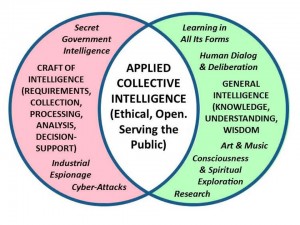
FIGURE 1 ~ Intelligence as a Craft versus Intelligence as a Human Capacity.
My emphasis for the past quarter-century, mis-directed as it turns out, has been on teaching over 66 governments how to better access and leverage open sources, in other words, I have been trying to fix the left or red side of the above duality10. I failed, in part because of the corruption endemic to the secret intelligence world, where spending vast amounts of money on secret technical collection – mass surveillance – is profitable for the few while being unaccountable to the taxpayers for any absence of a Return on Investment (ROI). Although I have always understood the value of OSINT to the public, it is only now that I am focused on helping the public devise a capacity to confront and bury all lies on all topics at all levels in real time.
Recently – in the past five years, inspired in part by Herman Daly, father of ecological economics, and by Richard Stallman, the foremost pioneer along with Linux Torvalds of Free, Libre Open Source Software (FLOSS) – I have conceptualized the combination of Holistic Analytics with True Cost Economics11 and Open Source Everything (as outlined in my latest book, but not noticed until Nafeez Ahmed profiled the idea in The Guardian) 12. With this article I present a brief roadmap for achieving Applied Collective Intelligence.
STATE OF THE WORLD – NEED FOR HOLISTIC ANALYTICS
I want to begin, as an intelligence professional intent on defining the new evolving craft of intelligence13, with just two points of reference: the ten high-level threats to humanity as identified by the United Nations High-Level Panel on Threats, Challenges and Change14 and the twenty global problems identified by Jean-Francois Rischard, then Vice President for Europe of the World Bank15.
TEN HIGH LEVEL THREATS
These are the ten high-level threats to humanity. They are in priority order. They are useful as a means of measuring the degree to which any particular government’s policies and programs are relevant to protecting their respective populations and promoting prosperity.
POVERTY ~ INFECTIOUS DISEASE ~ ENVIRONMENTAL DEGRADATION
~ INTER-STATE CONFLICT ~ CIVIL WAR ~ GENOCIDE ~ OTHER ATROCITIES
~ PROLIFERATION ~ TERRORISM ~ TRANSNATIONAL CRIME
These ten high-level threats are also a helpful starting point for any university, government, or other organizations seeking to be genuinely multidisciplinary in its strategic, operational, tactical, and technical processes and programs.
These particular threats, in this particular order, are slightly flawed in that they do not reflect the continuation today of unilateral militarism, virtual colonialism, and predatory capitalism. They also do not include the potential threat of technology run amok, both in bio-chemical chain reactions and in computational catastrophes16.
TWENTY GLOBAL PROBLEMS
Here below are the twenty global challenges in three groups as devised by Jean-Francois Rischard; this set of challenges is noteworthy for its balance among planetary, human, and organizational challenges.
GROUP 1 ~ SHARING OUR PLANET
GLOBAL WARMING ~ BIODIVERSITY & ECOSYSTEM ~ FISHERIES DEPLETION ~ DEFORESTATION ~ WATER DEFICITS ~ MARITIME SAFETY & POLLUTION
GROUP 2 ~ SHARING OUR HUMANITY
POVERTY ~ CONFLICT PREVENTION ~ EDUCATION FOR ALL ~ INFECTIOUS DISEASES ~ DIGITAL DIVIDE ~ NATURAL DISASTERS
GROUP 3 ~ SHARING OUR RULEBOOK
REINVENTING TAXATION ~ BIOTECHNOLOGY ~ GLOBAL FINANCIAL ARCHITECTURE ~ ILLEGAL DRUGS ~ ECONOMIC COMPETITION ~ INTELLIGENCE PROPERTY ~ E-COMMERCE ~ INTERNATIONAL LABOUR & MIGRATION.
There have been other important contributions17 but for my elementary purposes, these two very informed and widely-accepted summaries of the state of the world and our shared challenges will do as a starting point.
One of the first tasks for any group practicing Applied Collective Intelligence is to devise their own list of threats, in priority order, for group attention. The threats will differ, especially in priority, from place to place, but three of them – poverty, disease, and environmental degradation – appear to be universal.
HOLISTIC PERSPECTIVES NEEDED
The graphic below illuminates what no university, no government, no corporation, does today in the way of holistic analytics18.
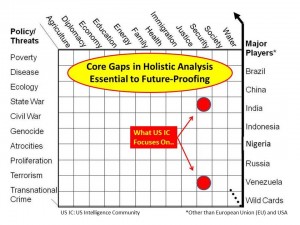
FIGURE 2 ~ Preliminary Concept for Holistic Analytics.
END OF THE INDUSTRIAL ERA – EIGHT INFORMATION TRIBES
We are at the end of the Industrial Era in which scientific and technical achievements, and organizational achievements, have been abundant, and at global scale. Unfortunately, these achievements generally have been divorced from ethical foundations as well as the real-world needs of the poorest, consequently being abusive of humanity at large in the long run. Western colonialism, unilateral militarism, and predatory capitalism have been dominant these past two hundred years19. Such “analysis” as has been done has favoured the interests of the 1% over the 99%, and neglected a respect for “ground truth” as well as any attempt to establish “true costs” of any given policy, service, product, or behaviour. Without belabouring both the achievements and the shortcomings of the Industrial Era, my focus now is on how best to achieve remediation toward a prosperous world that works for all.
One starting point is recognition of the fact that governments are merely one of eight information “tribes” or networks, and generally the least informed and the least agile. For some time now, since I first conceptualized the “smart nation” in 199620, I have been thinking that there are many sectors of society with knowledge that is not shared. Eight groups in particular concern me. They are, in alphabetical order:
ACADEMIC ~ CIVIL SOCIETY ~ COMMERCE
~ GOVERNMENT ~ LAW ENFORCEMENT
~ MEDIA ~ MILITARY ~ NON-GOVERNMENT
Civil Society includes labour unions, religions, and activists who are not organized into non-government non-profits. Media includes bloggers and alternative media. My core point is that we are fragmented across society in a manner that makes it virtually impossible to “do” Applied Collective Intelligence. Completely apart from the reductionism characteristic of the Westerner whose approach to governance and science assures the isolation of each of these tribes from one another – and within the tribes, the separation among organizations, and within and among organizations, the isolation of individuals who lack access to one another and to the information they think is relevant to their varied responsibilities.
Applied Collective Intelligence seeks to leverage open source information and open source information technology specifically, open source engineering generally, to empower all eight of these tribes toward the creation of the World Brain and the ability to work together in a hybrid form respectful of the future – our goal is nothing less than a prosperous world at peace, a world that works for all21.
TRUE COST ECONOMICS
True Cost Economics, within which I include all possible feed-back loops and all possible aspects of holistic analytics such as political-military, socio-economic, ideo-cultural, techno-demographic, and natural-geographic costing22, is the essential foundation for assuring that humanity is pursuing sound policies and behaviours in relation to our fragile Earth and its extraordinary ecology of plants, animals, and matter that we are now understanding is not a “solid” per se, but rather a particularly dense configuration of energy.
In practical terms, true cost economics demands that we conduct research and document, for any given product, service, behaviour, or policy: the water content; the fuel utilized from creation of the raw materials through processing, transport, sales, and end-use; the degree of child labour, regulatory violations, and tax avoidance inherent; and of course the specific toxins released into the atmosphere, into public water bodies, or into the earth.
Here is just one example: for a single white non-organic cotton T-Shirt, the true costs include 570 gallons of water; 8 kWh in energy used by machines; 11-29 grams of fuel; varied emissions of Nox, SO2, CO2, N2O, and other volatile compounds; and in toxins, 1-3g of pesticides along with diesel exhaust and heavy metals (in dyes). Child labor across any of seventeen countries, earning 50 cents a day, is also a cost for any given cotton T-Shirt as traditionally produced23.
WHOLE EARTH HOLISTIC THINKING
Starting with the five major “spheres” defined by others that comprise the Earth, I add the human subsystems (the natural-geographic subsystem is the whole) and then strive to make the point that the feedback loops among all these systems are what we need to understand if we are to reduce the negative outcomes on the left and increase the positive outcomes on the right.
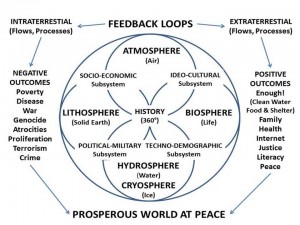
FIGURE 3 ~ Whole Earth Holistic Thinking – Applied Collective Intelligence.
Below is a complementary and excellent depiction of Total Impact Measurement and Management (TIMM), a signal contribution from PriceWaterhouseCoopers International in the United Kingdom24. It is a helpful means of illustrating how any given activity, behaviour, policy, product, or service can be – must be – analyzed in relation to its economic, social, and environmental impacts, among others.
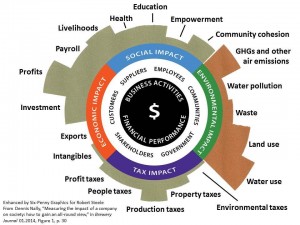
FIGURE 4 ~ Whole Systems Analytics and Total Impact Measurement.
Academia, the economy, government, and society are not structured – nor trained to think – in this fashion. We are at the end of centuries of reductionism dismissive of true costs and obsessed with short-term financial profits that benefit the few at the expense of the many including all generations into the future. The true costs of all this misbehaviour are now converging to threaten all humanity.
OPEN SOURCE EVERYTHING
Open Source is not, as many assume, simply a legal and technical concept referring primarily to software and increasingly also to hardware, denoting that the software or hardware is freely available and open to both redistribution and modification without substantive encumbrance.
Open Source Everything (OSE) is a meme, a mind-set, and a philosophy of education, intelligence (decision-support), and research. The below diagram is representative of the larger ecology.
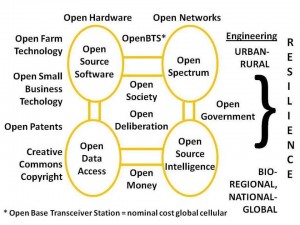
FIGURE 5 ~ Open Source Everything (Partial Depiction).
What really matters about the above partial representation is that we must treat all of them as an ecology and go “all in” across all the opens. Open Data without Open Hardware and Open Source Software is merely gifting all our data to corporations that will continue to impose the wasteful costs of proprietary software licensing fees, training, and maintenance, costs that most local governments and small businesses are now finding impossible to continue paying.
In commercial terms, OSE is a means of harvesting the Cognitive Surplus of a broadly distributed, self-motivated network25. Of particular note is that OSE is the only technical approach that is affordable, inter-operable across all boundaries, and scalable toward the 5 billion people whose needs are not responsibly addressed by the academy, economy, government, or society of the present.
OSE is the ethical, intellectual, commercial, and legal underpinning for the emergent new economy that is collaborative, ethical, inclusive, and sharing in nature.
The essence of financial profitability for Applied Collective Intelligence within this new economy lies in a mix of free education combined with licensing, services, and the monetization of transactions. OSE can be licensed in multiple forms using Creative Commons designations, such that the code, to use a software example, is open to modification and redistribution, but cannot be used to collect financial remuneration without engaging the originator.
Creative Commons is a viable legal construct but not yet fully established in law or in technology to the extent that it actually protects social enterprises and their intellectual rights26.
OSE is the underpinning for local to global information-sharing and sense-making, allowing for the efficient harvesting and harnessing of cultural, historical, and linguistically specific information across all boundaries, human, financial, and technical. The term of art for the human aspect is Multinational, Multiagency, Multidisciplinary, Multidomain Information-Sharing and Sense-Making (M4IS2)27. I shorten that, instead of using the acronym, to Multinational Everything. In combination with OSE, a predominantly technical term of art, the two define a virtual World Brain in which all minds eventually are connected to all information in all languages and domains, all the time and – this is really important – all humans have information tools with which to make sense of it all and achieve direct democracy and deliberative dialog across all boundaries.
My book, The Open Source Everything Manifesto, and the home page for the topic28, together offer additional insights into the larger context and potential application of this concept.
OPEN SOURCE INTELLIGENCE
For over a quarter-century others and I have been pointing out that the current approach to government intelligence (emphasizing secrecy and mass technical surveillance) as well as the current approach to commercial intelligence (emphasizing industrial and cyber-espionage) are deficient29. In my view, over 90% of what we need to know to be effective stewards of the Earth and productive citizens is not secret, not expensive, and not harvested by governments, corporations, or even universities.
Since I have published so much about Open Source Intelligence (OSINT) I am reluctant to repeat or even summarize that body of work here30. Instead I draw the reader’s attention to a five points:
1 ~ My experience has shown that there are 33 core languages, including 11 dialects of Arabic, that are required if one is to be comprehensive about exploring human knowledge in any given domain. I know of no government, corporation, or university that is serious about doing multi-disciplinary research across this range of core languages – and even less so across the 150 additional languages I and others have identified as being relevant if one wishes to be competent in understanding all local challenges and emergent solutions.
2 ~ Today, as “big data” is becoming fashionable, I find that no one really understands the obstacles to doing big data at exascale levels, and that no agency – least of all the US National Geospatial Agency – is competent at offering a suitable geospatial platform for machine speed data fusion31. Although GoogleEarth and Keyhole Markup Language (KML) are useful, they do not accommodate non-geospatial data. CrisisMappers is of great interest to me, along with OpenStreetMap, but both will have difficulty scaling and neither they nor Google Earth have a sparse matrix unstructured database architecture ready to go to hold all information in all languages and all mediums in relation to the geospatial foundation. A major task for Applied Collective Intelligence, apart from fostering acceptance of Open Source Everything and Multinational Everything, will be to establish new data standards that are, in addition to open, geospatially grounded.
3 ~ Analytic competence across sources, processing, back office and desktop toolkits, and meaningful access to decision-makers, is marginal at best. We still do not have, in one integrated suite of tools, the eighteen functionalities identified in 1989 by the Central Intelligence Agency as necessary for any analyst to make the most of the data assigned to them. I consider all analytic toolkits today to be fraudulent in their claims and ineffective in their performance32.
4 ~ Even the most prestigious universities fail the smell test when one looks at the degree to which professors cite relevant works from beyond their small established circles – and certainly almost never in other languages. University research is, in two words, incestuous and pedestrian. At the same time, recognizing that some excellent work is being done here and there, the fact is that roughly 1% of scientific research that has been carried out actually gets published33.
5 ~ OSINT is primarily about human contacts and human conversations and human insights arrived at among humans34. It is not, as the American spies have sought to define it, about surfing the Internet with US citizens whose only qualification for being present is that they have a Top Secret clearance. In my view we are at the beginning of a renaissance in the role of the university as a catalyst for education, intelligence (decision-support) and research; the university must again become central to civilization.
OPEN SOURCE ENGINEERING
There are two terms I want to bring forward here, the first is ephemeralism and the second is embedded intelligence.
Ephemeralism, coined by Buckminster Fuller35, refers to the ability to create more with less. In today’s environment of “cost plus” contracting, this is not done. The true cost of any given product or process is not considered. Waste on the order of 50% is documented36 – but welcomed because profits – and kickbacks to politicians – are calculated on the basis of the total financial cost. Intelligent design integrating bio-mimicry37 and deeply appreciative of both true costs of resources and future effects of toxins is not standard. We are now at a point where ephemeralism can be achieved by leveraging OSINT.
Embedded Intelligence is characterized as the ability of a product, process or service to reflect on its own operational performance, usage load, or in relation to the end-user or environment in terms of satisfactory experience. This self-reflection is facilitated by information collected by sensors and processed locally or remotely to derive insight. These aspects must be considered from the design stage such as to enhance product lifetime and performance, increase quality of process or service delivery, or ensure customer satisfaction and market acceptance38.
The below graphic combines the original concept focused on the manufacturing aspect, with my new concepts focused on the decision-support to design aspect.
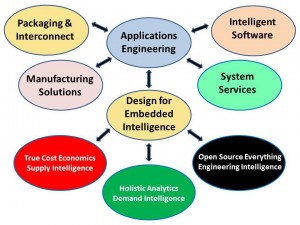
FIGURE 6 ~ Enhanced Approach to Embedded Intelligence.
The prevailing approach to EI is that of IBM and its “Smart Cities” concept. This is an example of doing the wrong things righter39. Doing the right thing would involve adding True Cost Economics as Supply Intelligence, Holistic Analytics as Demand Intelligence, and Open Source Everything as Engineering Intelligence. Taking this approach will, I believe, create a new gold standard for both the emergent discipline of embedded intelligence, and the emerging discipline of integral decision-support. My focus is on a complete re-design of the academy, the economy, government, and society, to embed intelligence in what we build, how we build it, and how we use it.
THE WAY AHEAD
Open Source Everything is how we enable local to national and then international governments, universities, and all others to share data while respecting anonymity, identity, privacy, and rights. This is the only affordable, interoperable, scalable solution. Those that limit themselves to Open Data (retaining proprietary approaches to everything else) are destined for failure, and more rapidly so when corporations refuse to share their own data with the government.
True Cost Economics is how we transform the entire data ecology of any given community – all stakeholders and not only the government – so as to radically reduce waste and achieve design and engineering efficiencies simply not contemplated nor realized beforehand.
Holistic Analytics – transparent, truthful, and inspiring of public trust – is our larger method.
Open Source Engineering is the applied outcome of all of the above. It creates smart safe communities in which waste has been eradicated and corruption is so transparent as to be quickly eradicated.
A NEW KNOWLEDGE PARADIGM
I have concluded that education, intelligence (decision-support), and research are now badly trained, equipped, and organized. Changes must be made. My intent is to make it possible for every government element, every other organization, and individuals, to access information relevant to their mission or interest across all boundaries, while being able to aggregate and exploit that information rooted in geospatial and time-date visualization, aggregated by threat or policy domain, and further separable for consideration at each level of analysis: strategic, operational, tactical, technical.
This depicts my overview of Applied Collective Intelligence as a constructive force for academia, the economy, governance, and society.
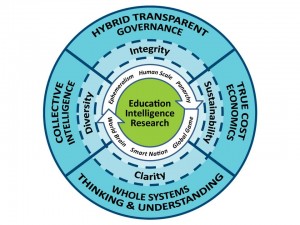
FIGURE 7 ~ Grand Strategic Design for Integral Education, Intelligence, & Research.
I will not belabour the elements, other than to note that the six terms in the inner circle – Ephemeralism, Human Scale, Panarchy, World Brain, Smart Nation, and Global Game – are all central to Applied Collective Intelligence.
HUMAN RIGHTS, EARTH RIGHTS, AND THE RE-UNIFICATION OF RELIGION, PHILOSOPHY, AND SCIENCE
Despite my continued emphasis on the centrality of the human factor (computers are tools – artefacts – nothing more40) I find it helpful to always single out human rights including the rights of anonymity, identity, privacy, and rights generally to one’s own labour and intellectual property.
It is also helpful to observe now, as Vampire Capitalism comes face to face with its own demise41, having destroyed its seed corn, the productivity of the public, that religions and philosophy matter. Although Will Durant has done more than most to address the critical role that integral education and a proper philosophy play in addressing “the social problem42,” it is E.O. Wilson, in his book Consilience: The Unity of Knowledge43, who answers the question, “What is the relation between science and the humanities, and how is it important for human welfare?” As authors from John Ralston Saul to Matt Taibbi have documented44, when science and capitalism do great harm to humanity, they are out of control and must be stopped.
Today we see the re-emergence of religion along with consciousness and spiritual exploration and new forms of civic dialog in which the government is recognized as being unable to govern and only one of eight larger human organizational elements that must learn to share. Islamic economics and finance are coming to the fore as being more ethical and respectful of human needs45, than secular “anything goes” Western capitalism of the Goldman Sachs variant. Similarly The Most Holy Father of the Catholic Church has recently reversed the decades of repression against the Jesuits and Liberation Theology, and sought to make a new compact with the poor46 – the five billion poor whose annual aggregate income is four times that of the one billion rich47.
Human Rights are central to the liberation of the inherent intelligence and innovative possibilities that humans, uniquely among all living species, appear capable of. It should also be clear by now that plants and animals are not just alive, but conscious and communicating with one another48 hence they merit our respect and eventually we must be able to integrate what they know into our larger understanding. Lastly, I would suggest that humanity is on trial and failing the ultimate cosmic test. We have allowed the 1% to fence the commons, criminalize natural behavior49, and sponsor programs of war and bio-chemical hazard inimical to humanity and to all living creatures50.
Applied Collective Intelligence re-unifies religion, philosophy, and science. Applied Collective Intelligence restores as our human goal the creation of a prosperous world at peace, a world that works for all. In passing, Applied Collective Intelligence protects the 1% from the pitchforks, avoids a blood-bath certain to include the downing of selected Lear Jets here and there, and creates infinite wealth for all while eradicating Western forms of waste, of corruption, and of sacrilege.
FIVE ORGANIZATIONAL INITIATIVES
There are five organizational initiatives I would like to see sponsored by any single government, altruistic corporation, or visionary university – or any combination thereof. The below graphic depicts four of the five, with the fifth, an Open Source Everything Innovation Hub, being methodical rather than institutional.
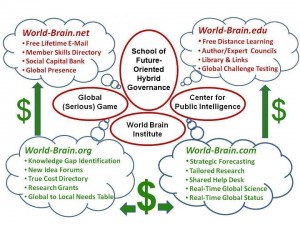
FIGURE 8 ~ Organizing for Applied Collective Intelligence.
SCHOOL OF FUTURE-ORIENTED HYBRID GOVERNANCE. This is envisioned as a new residential school with an extension program for non-resident students, as well as a very robust program of faculty and student exchange, joint investigations, shared online databases, and other forms of outreach to universities, governments, corporations and non-governmental organizations around the world. While proposed as contingent on earmarked funding, the School could nevertheless be started as a virtual entity from existing human, physical, and financial resources. A new building and green village complex are envisioned with twelve wings – one each for each of the eight information networks or tribes51 as well as the four Centres shown above.
My intent is to create a model that can be replicated – and adapted – to any local circumstance.
1 ~ Within the School there would be a Provost Centre for Comprehensive Architecture where all of the schools and departments of the larger university might form an intellectual, data-sharing, and methods council – the new high table of academia. This Centre would also take on the vital task of ensuring that anonymity, identity, privacy, and rights are properly protected within all development, while also championing an Autonomous Internet52 and Liberation Technology53.
2 ~ The Global (Serious) Game as the interactive manifestation of the Open Source Everything Innovation Hub applied to real world challenges using real world information – this is where all True Cost information can reside in a sparse matrix connected to a local to global digital open source map that allows any citizen to see the specifics and totality of all true costs in relation to anything of interest to them.
3 ~ The World Brain Institute as the local to global proponent for extending the platform to every organization world-wide, while empowering individuals via the four online domains:
A ~ World-Brain.Net strives to register as many as wish to in a manner that both validates their identities when such validation is essential to the process and they opt-in; while also providing them with reliable anonymity & privacy, as well as means of reserving rights related to any knowledge or data they share. This is not a revenue producer, but this captures billions of human minds that can be monetized through the other three online networks.
B ~ World-Brain.Edu strives to be the platform for persistent pervasive free online education for life, while also serving as a foundation for any individuals and organizations who wish to organize localized face to face and both physical and online human to human educational options. This will take testing and tutoring as well as team learning to entirely new levels of excellence and effectiveness.
C ~ World-Brain.Org is a revenue-producer and makes the University the hub for M4IS2 world-wide at all levels of practice from local to global. From knowledge gap identification to research funding and new forms of co-investment (including the harnessing of cognitive surplus and crowd-sourcing) to new forms of quality control that eradicate plagiarism and optimize Creative Commons credit and compensation, this aspect seeks to double or triple the return on investment of the existing research base while cleansing it of waste from redundancy and corruption related to plagiarism and poor sources and methods.
D ~ World-Brain.Com is a revenue producer implementing the Herring Triangle54 of shared monitoring, shared help desk, tailored decision-support, tailored strategic forecasting with its local to global online structured and validate information commons (displacing the erratic and shallow archipelago of unreliable and biased sources today), its local to global distributed network of help desks (reference librarians without borders augmented by information brokers, private investigators, investigative journalist, citizen activists, and so many others), and of course as a central registry for commercial intelligence with each source having a validated record of past performance.
3 ~ The Centre for Public Intelligence is the model that can be replicated at any level anywhere by anyone using free open source software and hardware that in turn enables localized free open cloud to open spectrum public agency. The value of the whole is found in its clarity, diversity, integrity – and the sustainability it enables55.
The School (or Institute) that I envision would lead the way in creating a new PhD/DBA in Applied Collective Intelligence and Open Source Everything / Engineering. Graduates would master Holistic Analytics including Citation Analytics, Time & Space Analytics, and True Cost Analytics; True Cost Economics; Open Source Everything as engineering and technology management; and Hybrid Governance sources and methods.
The ultimate outcome is the transparent, truthful integration of all information in all languages all the time, such that all individuals and organizations across the eight information tribes are empowered in a manner never before achieved. This final graphic depicts my “atomic” vision in which the above institutional and methodological initiatives create a Whole (Human) Mind favourable to a Whole Earth.
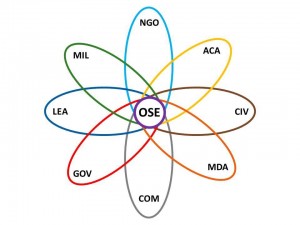
FIGURE 9 ~ Uniting the Eight Tribes with Open Source Everything.
Endnotes
1 Academic followers of the secret world who are lacking in actual practitioner experience will be quick to challenge this assertion. My publications, all free online, include two books with forewords by past and then present chairmen of the US Senate Select Committee on Intelligence (SSCI). My motto, “the truth at any cost lowers all other costs,” in one that academics with limited real-world experience would do well to embrace. My body of work, including books, articles, chapters, monographs, and lectures, is easily accessed via Phi Beta Iota the Public Intelligence Blog, http://phibetaiota.net, hereafter PBI.
2 General Tony Zinni, USMC as relayed to Col G. I. Wilson, USMC (Ret) and in turn cited by Robert Steele, “Open Source Intelligence,” in Loch Johnson (ed.), Strategic Intelligence: The Intelligence Cycle (Westport, CT: Praeger, 2007), Chapter 6: 96-122. Two graphics with additional information, including a second “fact checking” back to General Zinni via Col Wilson, are at http://phibetaiota.net/?s=Graphic+Zinni.
3 Cf. Wolfgang Reinicke, Global Public Policy: Governing without Government (Washington, DC: Brookings Institution Press, 1998) and Wolfgang Reinicke et al (eds.), Critical Choices: The United Nations, Networks, and the Future of Global Governance (Ottawa, ON: IDRC Books, 2000). An important early work, one earning the author the Nobel Prize, is Elinor Ostrom, Governing the Commons: The Evolution of Institutions of Collective Action (Cambridge, MA: Cambridge UP, 1990). Her key point: the best governance demands the complete participation of those being governed, both as rule-makers witting of all relevant local knowledge, and as rule-enforcers, constantly present and in human contact with one another and the commons being governed together.
4 Redemptive Capitalism is a term used by Bo Riddle (personal communication); Inclusive Capital is a term used by Lady Rothschilds of London, see her Conference on Inclusive Capitalism, 27 May 2014. Since capitalism emphasizes capital over labour and raw materials, I reject the term in favour of Mutuality Economics as championed since 1947 by one very wealthy American family, the Mars Family. Cf. Badger II, Stephen M. (2014). “Editorial,” The Brewery Online PDF (London, UK: Freuds, January 2014), and Bruno Roche, “The Economics of Mutuality,” Online PDF (Universite Catholique de Louvain, 2014).
5 Cf. Mark Tovey (ed.), Collective Intelligence: Creating a Prosperous World at Peace (Oakton, VA: Earth Intelligence Network, 2008). I funded this book and was originally the senior co-editor, but removed myself from the cover to honour the comprehensive contributions of then PhD candidate Tovey, today Dr. Tovey.
6 Tom Atlee, The Tao of Democracy: Using Co-Intelligence to Create a World that World for All (Cranston, RI: Writer’s Collective, 2003).
7 Jim Rough, “Dynamic Facilitation and Wisdom Council,” ToBe.Net (undated, accessed 3 September 2014). See also Jim Rough, Society’s Breakthrough!: Releasing Essential Wisdom and Virtue in All the People (Bloomington, IN: AuthorHouse, 2002).
8 Cf. Tom Atlee, “Tom Atlee: Factors Supporting Collective Stupidity, Collective Guesstimation, Collective Intelligence, and Collective Wisdom,” PBI (13 August 2014) and also “Tom Atlee: Flawed Wisdom of the Crowds – Neglects Conversation & Role of Interaction,” PBI (10 August 2014).
9 Cf. Robert Steele, The New Craft of Intelligence: Personal, Public, & Political (Oakton, VA: Open Source Solutions, Inc., 2002) and its central chapter, “New Rules for the New Craft of Intelligence,” both easily found in full text online at PBI.
10 When the North Atlantic Treaty Organization (NATO) could not afford Alvin Toffler, he recommended me, and I was hired to brief all the leaders of all the NATO and the Partnership for Peace (PfP). That led to the creation of the NATO Open Source Intelligence Handbook and other documents. The effort was a failure in part because the spies have money with which to corrupt third country intelligence leaders, and the common sense of Open Source Everything has no financial champion. All relevant documents are online at http://tinyurl.com/NATO-OSE.
11 Cf. Herman Daly and Joshua Farley, Ecological Economics: Principles and Applications (Island Press, 2003); Herman Daly and John Cobb Jr., For the Common Good: Redirecting the Economy toward Community, the Environment, and a Sustainable Future (Beacon Press, 1994); and Herman Daly and Kenneth Townsend (eds.), Valuing the Earth: Economics, Ecology, Ethics (Cambridge, MA: MIT Press, 1993).
12 Robert David Steele, The Open Source Everything Manifesto: Transparency, Truth, & Trust (Berkeley, CA: North Atlantic Books, 2012); Nafeez Ahmed, “The open source revolution is coming and it will conquer the 1% – ex CIA spy,” The Guardian (19 June 2014).
13 Cf. Robert David Steele, “The Evolving Craft of Intelligence,” in Robert Dover, Michael Goodman, and Claudia Hillebrand (eds.). Routledge Companion to Intelligence Studies (Oxford, UK: Routledge, 2013); see also “Intelligence Future – The Third Era of Local to Global Intelligence,” PBI (15 April 2013).
14 High-Level Panel on Threats, Challenges, and Change, A More Secure World: Our Shared Responsibility (New York, NY: United Nations, 2004).
15 Jean-Francois Rischard, High Noon: 20 Global Problems, 20 Years to Solve Them (New York, NY: Basic Books, 2003).
16 Tom Atlee provided this comment in his review of the first draft of this article, in e-mail (4 September 2014).
17 Cf. Nafeez Ahmed, A User's Guide to the Crisis of Civilisation: And How to Save it (London: Pluto Press, 2010); Lester Brown, Plan B 4.0: Mobilizing to Save Civilization (New York, NY: W. W. Norton & Company, 2009); Jerome Glenn et al. 2013-2014 State of the Future (Washington, DC: The Millennium Project, 2014); and Medard Gabel, Designing a World that Works For All: Solutions & Strategies for Meeting the World's Needs – 2005-2013 Labs (Seattle, WA: CreateSpace, 2014).
18 This graphic stems from my combining the ten high-level threats to humanity with the twelve core policies identified through an examination of various US presidential “Mandate for Change” blueprints. No one is organized to address any one threat or policy as a whole. No one is organized to evaluate and address all threats across all policies all the time. Regardless of what threats and what policies a group decides to embrace for action, they must all be attended to in a holistic manner. I have not included here a graphic I created after viewing Monica Anderson’s “Science Beyond Reductionism,” Syntience (2010). My additional graphic can be viewed online by searching for < Graphic: Holistic Mind-Shift Toward Hybrid Public Governance of the Whole by the Whole for the Whole >.
19 I have two master lists of book reviews, both easily found by searching online for each list title: Worth a Look: Book Review Lists (Positive Future-Oriented) and Worth a Look: Book Review Lists (Negative Status-Quo).
20 Robert David Steele, “Creating a Smart Nation: Strategy, Policy, Intelligence, and Information,” Government Information Quarterly (13/2, 1996).
21 This objective is generally as stated by Buckminster Fuller over the course of his life.
22 One analytic model, created in 1976, remains useful today, see “Graphic: Preconditions of Revolution in the USA Today,” PBI (16 August 2011), and the underlying graduate thesis also available online.
23 As researched by J.Z. Liszkiewicz and documented at http://true-cost.re-figure.org.
24 As included in Dennis Nally, “Measuring the impact of a company on society: how to gain an all-round view,” The Brewery Journal (January 2014): 29-31.
25 Cf. Yochai Benkler, The Wealth of Networks: How Social Production Transforms Markets and Freedom (New Haven, CT: Yale University Press, 2007); and Clay Shirky, Cognitive Surplus: Creativity and Generosity in a Connected Age (New York, NY: Penguin, 2010). There are multiple other pioneers including Michael Bauwens (Peer-to-Peer).
26 Lawrence Lessig, “A message from Larry: A new CEO and a challenge to the CC community,” Creative Commons (14 May 2014).
27 I learned the M4 portion of the term from Col Jan-Inge Svensson, Land Forces Sweden (Ret.), and added the IS2. Recent briefings where I have advocated this approach include 2013 Robert Steele on Healing the Americas with an Open Source Agency – and Integrity; Dicho Sobre la Curacion de las Américas con una Agencia de Todo Abierto – y la Integridad; 2010 M4IS2 Briefing for South America – 2010 M4IS2 Presentacion por Sur America (ANEPE Chile); and 2009 The Ultimate Hack: Re-Inventing Intelligence to Re-Engineer Earth (Denmark 27-28 October 2009).
28 Open Source Everything Home Page, http://www.tinyurl.com/OSE-2014.
29 Cf. Selected articles and chapters at “2014 Intelligence Reform (Robert Steele),” PBI (21 January 2014), and “Books By and With Robert Steele,” PBI (1 July 2013).
30 For the basics see “As Featured In Selected Publications,” PBI (19 January 2013).
31 Cf. “Big Data @ Phi Beta Iota,” http://phibetaiota.net/?s=Big+Data.
32 Cf. “2014 Robert Steele: Appraisal of Analytic Foundations – Email Provided, Feedback Solicited – UPDATED,” PBI (1 May 2014) and “1989 Webb (US) CATALYST: Computer-Aided Tools for the Analysis of Science & Technology,” PBI (15 October 1989).
33 Cf. Derek Bok, Universities in the Marketplace: The Commercialization of Higher Education, Princeton, NJ: Princeton University Press, 2004); and Stephen E. Arnold, “No Search or Publishing for Science,” Beyond Search (30 July 2014).
34 I have made this point for a quarter century but especially so in my briefing, “2007 Amazon as Hub of World Brain,” PBI (7 July 2007), and my monograph, Human Intelligence: All Humans, All Minds, All the Time (Strategic Studies Institute, June 2010). I do not address Reflexive Practice in the article, but do wish to note that I consider it a central tenet of Applied Collective Intelligence.
35 Cf. Buckminster Fuller, Critical Path (New York, NY: St. Martin’s Griffin, 1982) and also Synergetics: Explorations in the Geometry of Thinking (New York, NY: Macmillan, 1982).
36 Agriculture: Nadia Arumugam, “UN Says Europe Wastes 50% of Fruit and Vegetables – and America Isn’t Must Better,” Forbes (4 October 2012), Dana Gunders, “Wasted: How America is Losing Up to 40 Percent of Its Food from Farm to Fork to Landfill,” National Resources Defense Council (August 2012); Energy: Barry Fischer, “US Wastes 61-86% Of Its Energy,” CleanTechnica (26 August 2013); Health: Michael Galper et al, “The price of excess: Identifying waste in healthcare spending,” PriceWaterhouseCoopers (April 2008); Military: Scot Paltrow, “Behind the Pentagon’s doctored ledgers, a running tally of epic waste,” Reuters (18 November 2013), Stockholm International Peace Research Institute, “The US spends more on defense than the next eight countries combined,” Peter G. Peterson Foundation (13 April 2014), Perry Chiaramonte, “War on waste: Pentagon auditor spotlights US billions blown in Afghanistan,” Fox News (28 July 2014); Water: Robert David Steele, “Water: Soul of the Earth, Mirror of Our Collective Souls,” Huffington Post (7 January 2011).
37 There have been books and conferences on bio-mimicry – one current and evolving concept I find especially interesting and holistic is that of PhD candidate Melissa Sterry of the UK, Bionic City. She seeks to answer the question, “how would nature design a city?”
38 “PhD Studentships,” Centre for Doctoral Training in Embedded Intelligence, Loughborough University.
39 Russell Ackoff, “Transforming the Systems Movement,” Conference Paper (26 May 2004).
40 I disagree with those that consider artificial intelligence to be an “existential” threat. It is human intelligence – for example, in creating and releasing Stuxnet – that is insanely dangerous. Computers are water and energy pigs incapable of matching humans for petaflop speeds and intuitive innovation. At PBI see these three posts: “Rick Robinson: 11 Reasons Computers Fail Without Humans” (8 September 2014); “Graphic: When IT Hits the Wall and Only Humans Will Do” (26 March 2013); and “Graphic: Jim Bamford on the Human Brain” (28 December 2009).
41 The Conference on Inclusive Capitalism held in London on 27 May 2014, sponsored by the City of London and E. L. Rothschild, opening with H.R.H. The Prince of Wales, was a primal scream. What they do not “get” is that for 1% of the money they have under management, we can stop the pitchforks and create infinite wealth for all others.
42 Will Durant, Philosophy and the Social Problem: The Annotated Edition (Frisco, TX: Promethean Press, 2008)
43 E. O. Wilson, Consilience: The Unity of Knowledge (New York, NY: Vintage, 1999)
44 John Salston Raul, Voltaire’s Bastards: The Dictatorship of Reason in the West (New York, NY: Vintage, 1993) and Matt Taibbi, Griftopia: A Story of Bankers, Politicians, and the Most Audacious Power Grab in American History (New York, NY: Spiegel & Grau, 2011).
45 Cf. “Islamic Finance and economy: Unlocking its true potential,” Oxford Analytica Global Horizons Conference Panel, 17-19 September 2014.
46 Cf. Paul Vallely, “A Church for the Poor,” New York Times (4 September 2014).
47 Cf. C. K. Prahalad, The Fortune at the Bottom of the Pyramid: Eradicating Poverty Through Profits (Philadelphia: PA: Wharton School Publishing, 2006).
48 Cf. at PBI, “Yoda: Animal Intelligence and Sensing” (21 August 2014) and “SchwartzReport: The Plants are Talking – Intra-Terrestial Intelligence” (8 May 2013).
49 Cf. Paul Linebaugh, Stop, Thief!: The Commons, Enclosures, and Resistance (Oakland, CA: PM Press, 2014).
50 Cf. Smedly Butler, War is a Racket (Port Townshend, WA: Feral House, 2003); Charles Lewis, 935 Lies: The Future of Truth and the Decline of America’s Moral Integrity (New York, NY: PublicAffairs, 2014); and Charles Perrow, The Next Catastrophe: Reducing Our Vulnerabilities to Natural, Industrial, and Terrorist Disasters (Princeton, NJ: Princeton University Press, 2011).
51 Academic, civil society, commerce, government, law enforcement, media, military, non-government/non-profit.
52 Cf. “Autonomous Internet Road Map at the Peer to Peer Foundation, [accessed 10 September 2014].
53 Cf. Liberation Technology @ Phi Beta Iota, http://phibetaiota.net/?s=Liberation+Technology.
54 Several depictions of the Herring Triangle are easily found at http://phibetaiota.net/?s=Graphic+Herring.
55 I address this at length in Intelligence for Earth: Clarity, Diversity, Integrity, & Sustainability (Oakton, VA: Earth Intelligence Network, 2010).
See Also (Complete Issue, 18 Authors 1 Editor)
Reference: Spanda Journal on Collective Intelligence



